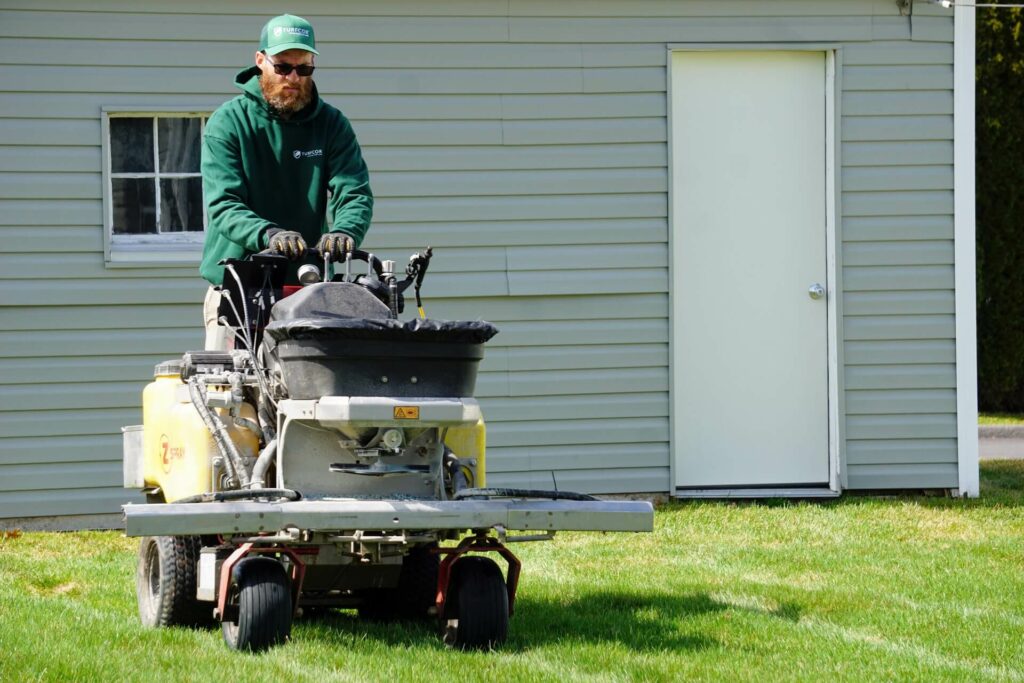As spring approaches, many of us look forward to seeing our lawns turn lush and green. However, crabgrass, a tough and fast-growing weed, can ruin this dream by competing with our grass for sunlight, water, and nutrients. Luckily, there’s a way to stop crabgrass before it starts: using a special weed preventer called crabgrass pre-emergent in early spring. This article will explore why using pre-emergent is a smart move to keep your lawn looking great, how it works, and the lasting benefits it brings to your lawn’s health and appearance.
Understanding Crabgrass
Crabgrass (Digitaria) is not just a single weed but a family of grassy weeds notorious for their resilience and rapid growth. This opportunistic invader germinates as soil temperatures rise in late spring, thriving in hot, dry conditions that are often detrimental to your lawn’s health. Unlike the grasses cultivated for lawns that form tidy, uniform turfs, crabgrass sprawls across the ground, creating a patchy, uneven lawn appearance. Once established, it is notoriously difficult to eradicate, making prevention the most effective strategy for control.
The Role of Pre-Emergent in Crabgrass Control
 Pre-emergent herbicides are chemicals designed to stop crabgrass seeds from germinating. Their mode of action is not to kill existing weeds but to prevent new ones from emerging. By forming a chemical barrier at the soil’s surface, pre-emergents ensure that the germination process is halted, effectively reducing the population of this pesky weed. It’s important to note that the timing of application is crucial; applying too early or too late in the season diminishes the effectiveness of the herbicide.
Pre-emergent herbicides are chemicals designed to stop crabgrass seeds from germinating. Their mode of action is not to kill existing weeds but to prevent new ones from emerging. By forming a chemical barrier at the soil’s surface, pre-emergents ensure that the germination process is halted, effectively reducing the population of this pesky weed. It’s important to note that the timing of application is crucial; applying too early or too late in the season diminishes the effectiveness of the herbicide.
Benefits of Early Spring Application
The success of pre-emergent herbicides hinges on their application before crabgrass seeds begin to germinate. Soil temperature is a reliable indicator for timing this application, typically when the soil consistently reaches 55°F at a depth of about 1 to 2 inches. Early spring application has several advantages:
-
Prevents Germination: By applying pre-emergent before crabgrass seeds sprout, you can maintain a uniform, attractive lawn throughout the season.
-
Reduces the Need for Later Intervention: Early prevention reduces the likelihood of needing more aggressive, and often more harmful, weed control methods later.
-
Cost-Effectiveness: Investing in pre-emergent application can save money in the long run by avoiding the costs associated with post-emergence crabgrass removal.
-
Maintains Lawn Health: A crabgrass-free lawn allows for better water infiltration and nutrient absorption, promoting a healthier lawn environment.
Long-Lasting Lawn Health and Aesthetics
A lawn free of crabgrass is not just about curb appeal; it’s about fostering an environment where your desired grass species can thrive. Preventing crabgrass competition allows for better root development of lawn grass, leading to improved water retention and resistance to pests and diseases. Moreover, a dense, healthy lawn is less prone to erosion, contributing to a more stable and environmentally beneficial landscape.
Environmental and Safety Considerations
Responsible use of pre-emergent herbicides is key to minimizing environmental impact. Modern formulations are designed to target specific weeds with minimal risk to surrounding plants and animals when used as directed. Homeowners are encouraged to select eco-friendly options and apply them judiciously, following manufacturer instructions for the best results. This proactive approach not only maintains lawn aesthetics but also supports broader environmental health.
Maintenance Tips for Optimal Results
To maximize the effectiveness of pre-emergent herbicides, homeowners should adhere to a comprehensive lawn care regimen:
-
Regular Maintenance: Mowing at the correct height, watering deeply but infrequently, and applying the right fertilizer help maintain a robust lawn that naturally resists weeds.
-
Monitoring: Keep an eye out for signs of crabgrass even after application, as no method is 100% foolproof. Early detection can prevent spread.
-
Reapplication: Depending on environmental conditions, a second application of pre-emergent may be necessary for year-round control.
-
Overseeding: Introducing new grass seed in the fall can help ensure your lawn remains dense and competitive against weeds.
Embracing Early Prevention for a Lush Lawn
The battle against crabgrass is won before it begins. By understanding the nature of this pervasive weed and strategically employing crabgrass pre-emergent in the early spring, homeowners can protect and enhance the health and appearance of their lawns. This proactive approach not only safeguards your lawn’s beauty but also promotes a healthier, more sustainable landscape. As we welcome the warmer days of spring, let’s also embrace the practices that ensure our lawns remain vibrant and thriving sanctuaries throughout the season.